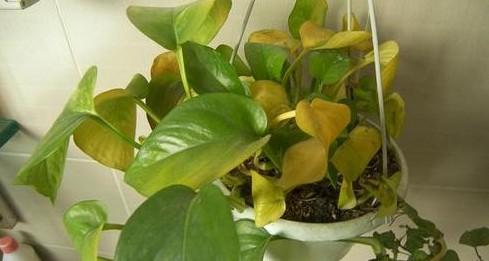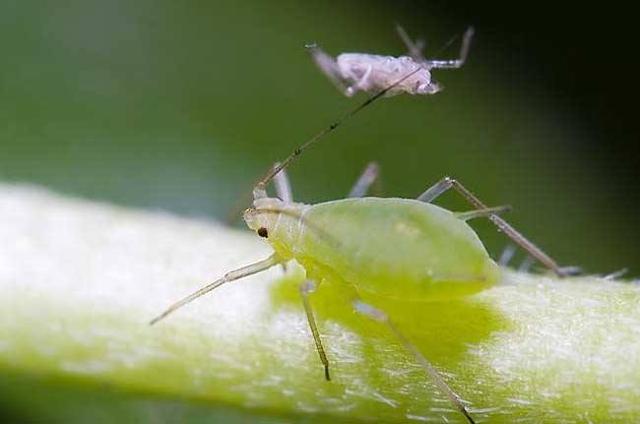How to save potted flowers from water shortage and withering? This will only accelerate the death of potted flowers!
Many flower lovers will encounter forgetting watering or going out, the potted flowers have not been watered for a long time, resulting in a large number of scorched leaves and twigs of the plant, which need to be paid attention to. Plants absorb water by their roots, but in fact, the absorption is carried out through the root hairs at the tip of the roots. The root hairs of plants are so small that they are only vaguely visible to the naked eye. It has a large number, but it is very delicate, and it is easy to die in harsh conditions such as drought.

When potted flowers can not absorb enough water, plant cells will lose swelling pressure and produce drooping and wilting of stems and leaves. Some of the root hairs of the initial potted flowers still have the ability to absorb, such as the immediate supply of water can return to the normal state. However, after drying for a long time, a large number of root hairs will die and affect the absorptive capacity of the plant. Especially coniferous plants, because their shape and structure can reduce water transpiration, even if a branch is cut and exposed to the sun, it will not immediately show dry appearance. Therefore, once the symptoms of water shortage of coniferous plants are found, the condition is often very serious.
In this case, if the potted flowers are watered enough immediately, the plants not only cannot absorb water, but also cause the potted soil to be too wet. After watering the potted flowers, the water in the pots is mainly absorbed by the roots and lost through foliar transpiration. After the plants lose their ability to absorb water, the potted soil is not easy to dry even under the hot and high temperature. It affects the respiration of potted flowers, thus killing the potted flowers which are extremely weak due to dehydration.
It is found that after the potted flowers have been dehydrated for a long time, the further consumption of water in the plant should be avoided in time, so that the plant can maintain a certain life activity, so that the root sends out new roots and root hairs, so it should be immediately moved to the shady place where the rain is sheltered. Broad-leaved plants should be pruned intensively, but coniferous plants are generally not pruned. At the same time, spray continuously on the leaves, and the amount of water sprayed is to the degree that the branches and leaves are moist and do not form water droplets dripping into the basin soil.
This can not only make the potted flowers have a high air humidity environment, but also absorb a small amount of very important water through the stems and leaves of the plants, so that the potted flowers can gradually recover their vitality. Generally, a small amount of water can be watered after 2-3 days, and when the broad-leaved plants sprout in about two weeks, and the leaves of coniferous plants become oily green, it shows that the potted flowers have grown root hairs with absorptive capacity, and only then can the normal watering and maintenance be restored and moved to the original place for cultivation.
Time: 2019-04-19 Click:
- Prev

Plants also have viviparous reproduction.
After hundreds of millions of years of evolution, from fish to amphibians to reptiles and birds, and finally to mammals, animals have acquired viviparity, the most "high-end" way of reproduction. If there are viviparous plants, you will find it hard to believe. Plants either through seeds
- Next

How do flowers and plants grow aphids? Summary of strong efficacy in killing aphids
Flowers and plants often breed some aphids, and they are also very destructive. It is generally attached to the back of the plant leaves, and then will suck the plant juice, the leaves will slowly turn yellow, the plant will slowly become short and not tall. Serious flowers may even wither. For example, there is a high incidence of aphids in spring and autumn.
Related
- Fuxing push coffee new agricultural production and marketing class: lack of small-scale processing plants
- Jujube rice field leisure farm deep ploughing Yilan for five years to create a space for organic food and play
- Nongyu Farm-A trial of organic papaya for brave women with advanced technology
- Four points for attention in the prevention and control of diseases and insect pests of edible fungi
- How to add nutrient solution to Edible Fungi
- Is there any good way to control edible fungus mites?
- Open Inoculation Technology of Edible Fungi
- Is there any clever way to use fertilizer for edible fungus in winter?
- What agents are used to kill the pathogens of edible fungi in the mushroom shed?
- Rapid drying of Edible Fungi

